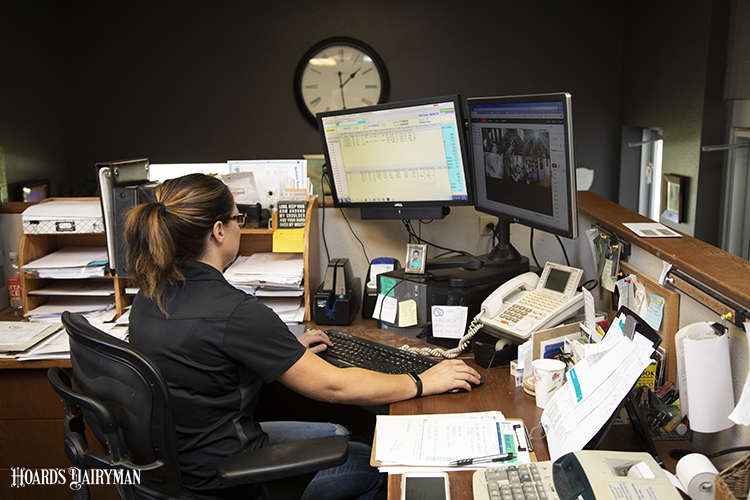
Financial evaluations, crop yields, weather predictions . . . dairy farmers consume and evaluate countless forms of data like this every day. Still, the largest source of information is the cows themselves. From daily milk yields and feed intake to pedigree records and disease instances, we are collecting more data points about our animals than ever before.
The difference with data from the herd is that we are increasingly balancing a cow’s actual performance with its genomic predictions of performance. Delving into those two areas and how they fit together is the topic of John Cole’s presentation during the virtual Connect Summit later this week. Having worked with genomics as a scientist at USDA’s Agricultural Research Service for 17 years and now leading research and development at URUS’s PEAK team, he recognizes the value of both types of cow data to making sound decisions for the herd and the farm.
Of course, genomic data allows decisions to be made more accurately and earlier in an animal’s life. Estimating breeding values that actually end up being reflected in the animal’s performance has paved the way for innovations such as residual feed intake that will lead us to develop more efficient cows that can meet changing consumer demands, Cole described. “When we say more efficient, folks think we mean she doesn’t eat enough. No, we’re talking about a big picture of efficiency,” he explained. “It’s less input per unit of output, not less total input necessarily.”
At the same time, more than 100 years of milk records have led us to make incredible strides in genetic improvement. DHI testing is just one example of how cow performance is measured on today’s farms, but that verified information adds value to the greater dairy system. “If you put a bunch of bad data in, that’s worse than not putting any data in,” Cole recognized. This regular stream of trustworthy information also allows herds to make management decisions in areas like culling and milk quality.
Now, those newer methods of data collection are generating information every day and even every hour. “How do we use those data in more ways?” he asked. “How do you actually use that data to guide your decisions?”
Bridging the gap
Knitting those phenotypic evaluations and genomic data together would be a way to make more informed management decisions. And though the full “phenotype-genotype gap” of physiology is a long way from being completely understood, the goal for dairy would be to predict actual performance most accurately from DNA data.
“For example, if you’re feeding a cow to produce 40,000 pounds of milk and she’s really, genuinely only capable of making 38,000 pounds, knowing that is valuable because then you calibrate both your expectations as a manager and the way you handle that animal,” Cole explained. In terms of both input expenses and animal welfare, a farmer is able to produce milk more efficiently.
Put another way, Cole describes that the goal of this type of data integration can help farms tailor their environment to their cows’ genetic makeup in order to get the best output per unit of input.
To hear more on this topic, you can join the virtual Connect Summit happening this Wednesday and Thursday. Speakers throughout the conference will discuss how technology and data can be best utilized to make a difference in the dairy industry. For more information and to register, click here.








